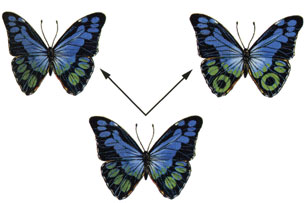Module 4 Intro
1. Module 4 Intro
1.22. Page 2
Module 4—Mechanisms of Population Change
 Explore
Explore
 Read
Read
Darwin’s theory of evolution by natural selection included these ideas.
- Life forms have developed from ancestral species.
- All living things are related to one another by varying degrees of common descent.
- All living things on Earth have a common origin or share a common ancestor.
- The mechanism by which one species evolves into another species involves random heritable genetic mutations. Mutations that create a survival advantage are more likely to be passed on to offspring. Eventually, the successful mutation increases in the population and causes the population as a whole to start to change.
viable offspring: offspring that are healthy and able to reproduce and create new offspring
What is a species? A species is defined by considering an animal’s anatomy, physiology, biochemistry, behaviour, and genetics. And a species is a group of similar organisms that can interbreed to produce viable offspring in nature. Viable offspring will live and be able to reproduce to create new offspring. The formation of new species is called speciation. Two forms of speciation are transformation and divergence.

Inquiry into Biology u2_S4.3_p.137, from McGraw Hill Reproduced by permission.
With transformation, new species arise as a species gradually changes over time and the old species is replaced by the more adapted species. One species evolves into another species (one path).

The evolution of mammoths is an example of speciation by transformation. Read more about this subject on page 136 of the textbook.

Inquiry into Biology u2_S4.3_p.137, from McGraw Hill Reproduced by permission.
Meanwhile, with divergence, new species can arise when barriers prevent populations from reproducing with each other. In this case, two or more species evolve from one parent species (many paths).
The evolution of the Galapagos Island finches is an example of divergence. Read more about this topic in “Figure 4.16” on page 137 of the textbook.